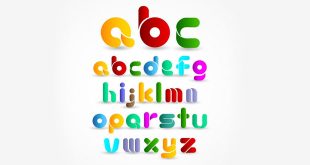Examples of Consonance in Poetry
Example 1
“‘T was later when the summer went
Than when the cricket came,
And yet we knew that gentle clock
Meant nought but going home.
‘T was sooner when the cricket went
Than when the winter came,
Yet that pathetic pendulum
Keeps esoteric time.”
Description: In these lines, Emily Dickinson has used the consonant ‘m’ frequently through the poem to emphasize the words.
Example 2
“Rap rejects my tape deck, ejects projectile
Whether Jew or gentile, I rank top percentile
Many styles, More powerful than gamma rays
My grammar pays, like Carlos Santana plays.”
Description: Following lines have been taken from the song ‘Zealots ‘by Fugees. In this poem, consonant sounds like ‘ile’ and ‘ays’ have been frequently repeated.
Example 3
“Great, or good, or kind, or fair,
I will ne’er the more despair;
If she love me, this believe,
I will die ere she shall grieve;
If she slight me when I woo,
I can scorn and let her go;
For if she be not for me,
What care I for whom she be?”
Description: These poetic lines are from the poem ‘Shall I Wasting in Despair’ by George Wither. This poem is consonance. It contains examples such as ‘r’, ‘d’, and ‘I’, etc.
Example 4
“Ralegh has backed the maid to a tree
As Ireland is backed to England
And drives inland
Till all her strands are breathless.”
Description: These lines have been taken from the poem ‘Ocean’s Love to Ireland’ by Seamus Heaney. Here, the poet has used consonants like ‘b’ and ‘d’.
Example 5
“Whose woods these are I think I know.
His house is in the village though;
He will not see me stopping here,
To watch his woods fill up with snow.”
Description: In the following poetic lines, the main emphasis is on ‘w’ and ‘h’.
Example 6
“A Quietness distilled
As Twilight long begun,
Or Nature spending with herself
Sequestered Afternoon.”
Description: These lines have been taken from ‘As Imperceptibly as Grief’ by Emily Dickinson. In these lines, the word ‘n’ has been stressed to produce the desired effect.
Example 7
“As in guys she gently sways at ease.”
Description: In the above line, the word ‘s’ is used repeatedly. This poetic line has been taken from the poem ‘The Silken Tent’ by Robert Frost.
Example 8
“And all is seared with trade; bleared smeared with toil;
And wears man’s smudge and shares man’s smell: the soil.”
Description: In the following lines, taken from the poem “God’s Grandeur”, the poet Gerard Manley Hopkins has repeatedly used the alphabet ‘d’ and ‘s’.
Example 9
“They talked of all their dreams and hopes,
Of art and nature, love and fate.
They peered through toy kaleidoscopes
And murmured thoughts I shan’t relate.
Then Holley held Miss Spider’s hand…
I’ll say no more, you understand.
For private moments between spiders
Should not be witnessed by outsiders.”
Description: These lines have been taken from the poem ‘Miss Spider’s Wedding’ by David Kirk. In this extract, words like’s’ and ‘d’ have been repeated.
Example 10
“And frightful a nightfall folded rueful a day
Nor rescue, only rocket and lightship, shone,
And lives at last were washing away:
To the shrouds they took,-they shook in the hurling and horrible airs.
Is out with it! Oh,
We lash with the best or worst
Word last! How a lush-kept plush-capped sloe
Will, mouthed to flesh-burst,
Gush!-flush the man, the being with it, sour or sweet,
Brim, in a flash, full!-Hither then, last or first.”
Description: In the given two poetic extracts from ‘The Wreck of the Deutschland’ composed by Gerald Manley Hopkins, the consonance examples are ‘ay’ in the first stanza and ‘t’ in the second.
Other Examples of Consonance
- He struck a streak of bad luck.
- Buckets of big blue berries.
- I dropped the locket in the thick mud.
- Some mammals are clammy.
- Few flocked to the fight.
- Dawn goes down
- Litter and batter
- Dress and boss
- Slither and lather
- Laughed and deft
- Spelled and scald
- Blank and think
- String and strong
- Creep and weep
- Sink and brink
- Car and war
- Sent and went
- Cat and fat
- Goat and boat
- But and hut
- Fair and chair
- Bring and spring
- Bull and pull
- Cheer and beer
- Far and jar
- Hard and ward
- Creep and sleep
- Borrow and sorrow
- Howl and bowl
Consonance is among the most common employed rhetoric tools in literature, as already evident from the series of examples listed above. Not only does it help add certain cadence to the most regular sentences, but can also be used to emphasize the importance of certain words in a sentence. The extensive list of consonance examples will help you understand this rhetoric tool better.
 Class Notes NCERT Solutions for CBSE Students
Class Notes NCERT Solutions for CBSE Students


